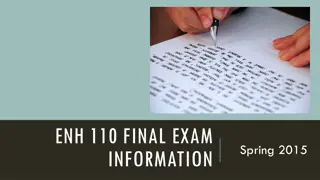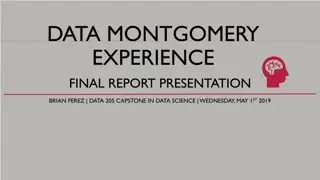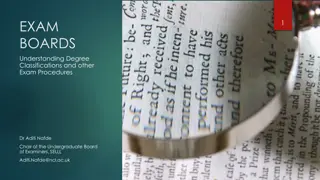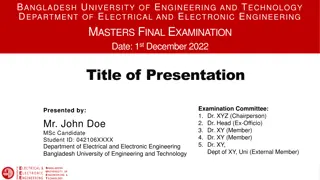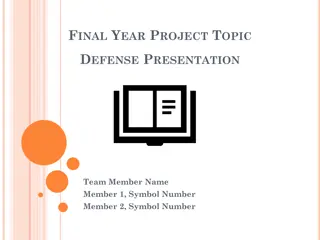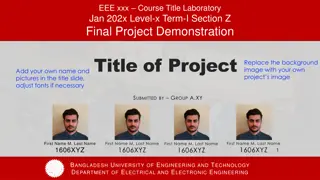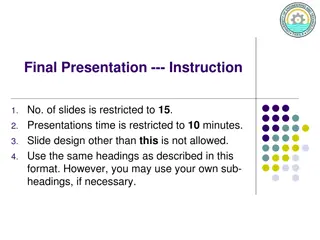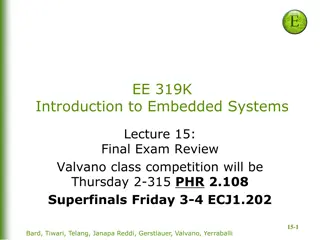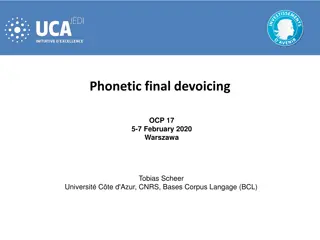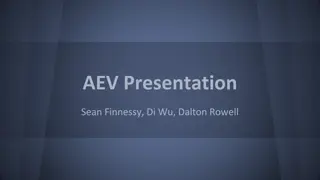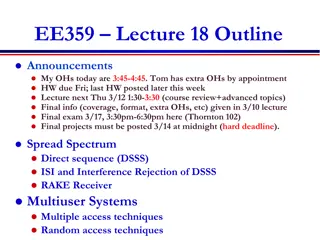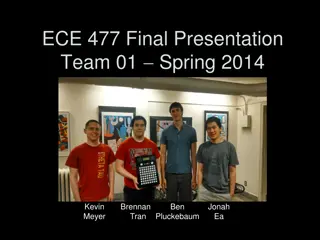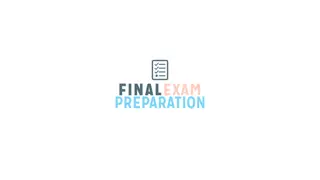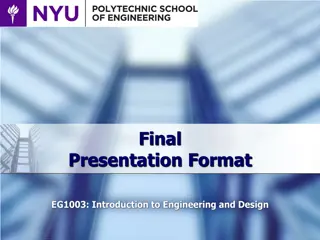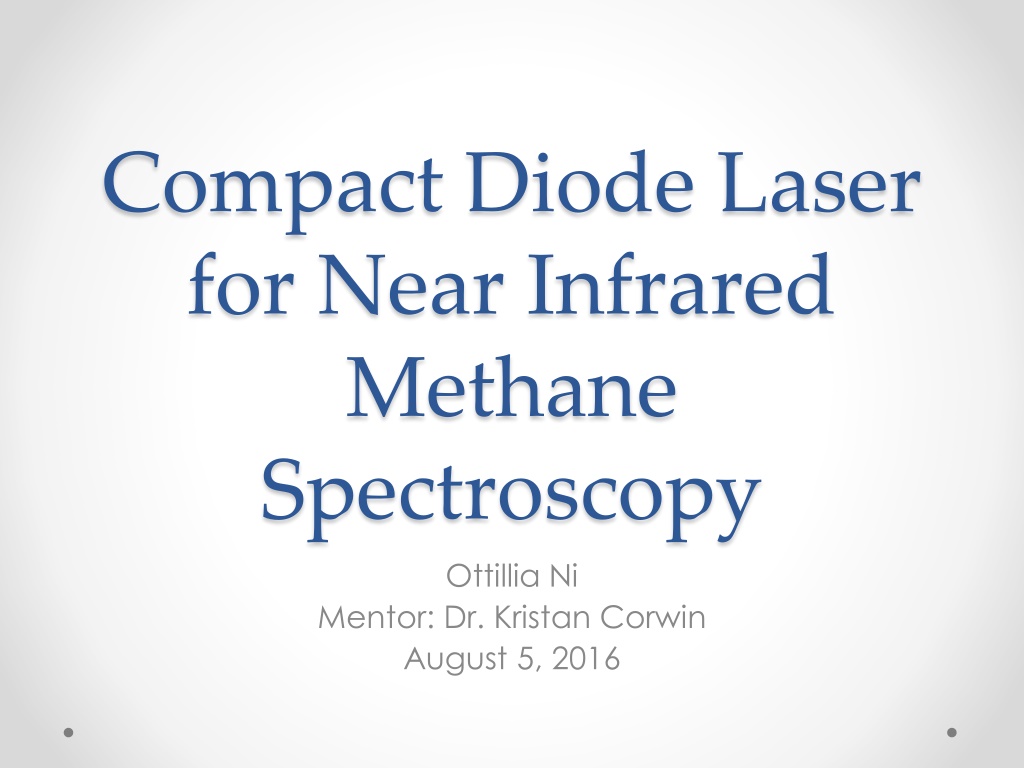
Compact Diode Laser for Near Infrared Methane Spectroscopy
Explore the development of a compact diode laser for near infrared methane spectroscopy, including motivation, challenges, methane absorption spectroscopy, and assembling the laser components. Learn about the interior of the diode laser and the powering mechanisms involved in this innovative technology.
Uploaded on | 0 Views
Download Presentation

Please find below an Image/Link to download the presentation.
The content on the website is provided AS IS for your information and personal use only. It may not be sold, licensed, or shared on other websites without obtaining consent from the author. If you encounter any issues during the download, it is possible that the publisher has removed the file from their server.
You are allowed to download the files provided on this website for personal or commercial use, subject to the condition that they are used lawfully. All files are the property of their respective owners.
The content on the website is provided AS IS for your information and personal use only. It may not be sold, licensed, or shared on other websites without obtaining consent from the author.
E N D
Presentation Transcript
Compact Diode Laser for Near Infrared Methane Spectroscopy Ottillia Ni Mentor: Dr. Kristan Corwin August 5, 2016
Motivation Expand gas-filled hollow fiber references to 1.6 microns wavelengths. o Absorption spectroscopy and sub-Doppler spectroscopy in methane-filled hollow fibers
Challenges of the Diode Laser Using the Littrow configuration to calculate the diffraction angle off the diffraction grating. Reconstructing and machining of an adapted diode laser design at the new grating angle. Redesigning the mirror mount to avoid beam clipping, passing a beam radius 4x the full width half maximum (FWHM). Needing high power to saturate methane for sub-Doppler spectroscopy
Methane (CH4) 4.0 3= 3158.6 cm-1, 2 3= 6317.2 cm-1 https://www.researchgate.net/figure/278652214_fig4_Figure-18-18-Methane-vibrational-normal-modes http://www.nist.gov/pml/electromagnetics/grp05/other-activities.cfm
Assembling a Compact Diode Laser
Interior of the Diode Laser 1 2 3 4 29.50 A Littrow Configuration .13 B .51 Mirror Diffraction Grating (600 lines/mm) 59.00 .03 1.91 C Laser Beam .50 .24 D d= line spacing = incidence angle = diffraction angle B= blazed angle E DEBUR AND BREAK SHARP EDGES UNLESS OTHERWISE SPECIFIED: DIMENSIONS ARE IN MILLIMETERS SURFACE FINISH: TOLERANCES: LINEAR: ANGULAR: FINISH: DO NOT SCALE DRAWING REVISION DATE SIGNATURE NAME TITLE: DRAWN CHK'D APPV'D F MFG mirrormountlaser MATERIAL: Q.A DWG NO. A4 WEIGHT: SCALE:1:1 SHEET 1 OF 1 https://en.wikipedia.org/wiki/Blazed_grating
Laser Parts Thermoelectric coolers (TECs) - heat pumps used to cool systems. PZT fine tune position of the the laser Thermistor- electrical resistor used for measurement and heat control Temperature Chip determines the temperature of laser http://www.ebay.com/itm/400W-12V-Thermoelectric-Cooler-Peltier-Plate-TEC-NEW-/111201613218
Powering the diode laser Cable: 6ft long
Future Works Align and fiber-couple the laser, fill a hollow core fiber with methane, and tune the laser to the resonance of the methane line Conduct absorption spectroscopy and sub-Doppler spectroscopy at 1.6 microns Develop sealed hollow-core fibers filled with methane absorbing laser light as a frequency reference. 20 m https://www.thorlabs.com/thorproduct.cfm?partnumber=HC19-1550
Acknowledgements Special thanks to: Dr. Kristan Corwin Dr. Brett DePaola Dr. Brian Washburn Ryan Luder Sajed Hosseini-Zavareh, Neda Dadashzadeh, Kushaan Weerasinghe, Manasa Thirugnanasambandam Fellow Physics REU Peers Dr. Brett Flanders Kim Coy This work is partially funded by the National Science Foundation (NSF) and the Air Force Office of Scientific Research (AFOSR) through NSF grant number PHYS-1461251.





